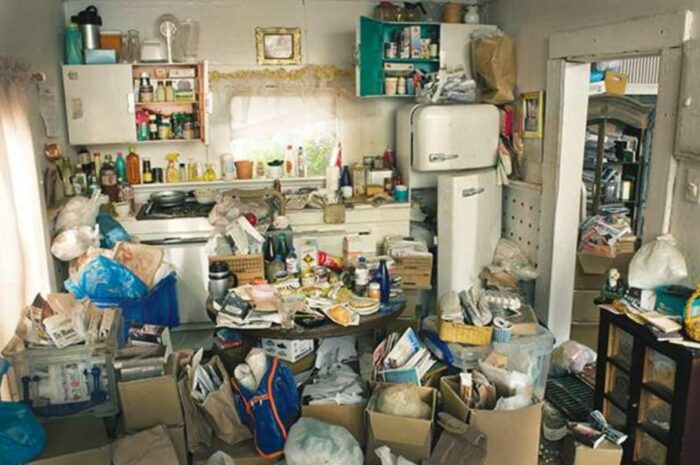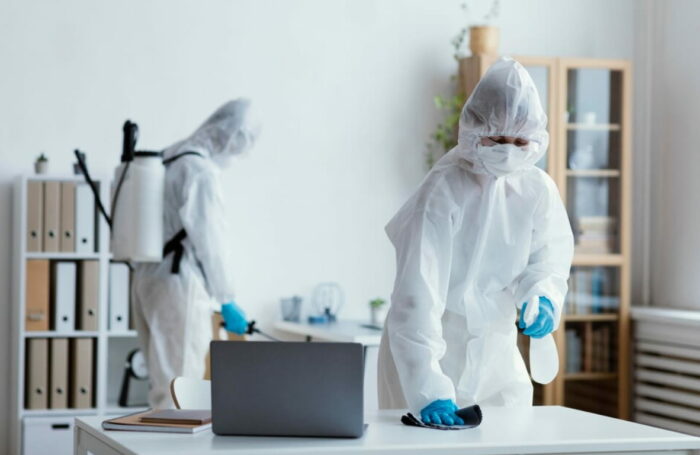Homes are meant to be sanctuaries; places of comfort, safety, and tranquility. But what happens when a home becomes a venue for biohazardous waste?
Perhaps the unthinkable happened, and a violent crime turned the living room into a crime scene. Or perhaps a house was neglected, leading to a build-up of hazardous biological waste.
No matter the reason, the result is the same – a house that’s not only unsafe but also a potential health risk to those who reside within it or come into contact with it. Safely cleaning a biohazard home is a serious matter that requires knowledge, skills, and the right safety precautions.
Defining Biohazard Homes

A biohazard home refers to a residential structure that has been contaminated or has the potential for contamination with hazardous biological materials such as human blood, waste, or other infectious substances.
The process of remediating a biohazard home is a serious and intricate task that should not be taken lightly. It requires specific expertise and training to ensure the safety of all individuals involved in the cleanup operation.
Biohazard cleaning often involves meticulous planning, the use of personal protective equipment, thorough removal of visible biological materials, rigorous cleaning, sanitization, and deodorization procedures, and the eventual restoration of the property to its pre-biohazardous state.
Properly managing biohazard situations is essential to protect both the immediate environment and the well-being of those who may come into contact with it.
Because of the serious nature of this work, biohazard cleaning is regulated by laws at the local, and national levels. In many cases, professional clean-up companies with certified technicians trained in biohazard remediation are called upon to handle these clean-ups.
However, understanding what the process entails can give a layperson an appreciation of the measures taken to restore a home to its pre-biohazardous state.
Getting Prepared for the Task

When dealing with a hazardous situation, preparation is paramount. To venture into a biohazard home without the proper personal protective equipment (PPE) and cleaning supplies is to risk exposure to harmful biohazardous waste.
PPEs such as disposable gloves, shoe covers, safety glasses, and respirators are essential to protect against splashes, sprays, and airborne particles.
The clean-up team also must have EPA-registered disinfectants, biohazard waste bags, sharps containers, and cleaning tools. Additionally, understanding the correct way to remove, package, and dispose of contaminated materials is imperative.
Finally, part of the preparatory stage is to have on hand a robust infection control plan. This will guide you in isolating areas, containing and removing waste, and ensuring that any contamination does not spread during the cleaning process.
The Steps to Cleaning a Biohazard Home
The first step is to assess and document the scene. What kind of contamination is being encountered? How extensive is it? Answering these questions will inform how you approach the remediation.
Next, completely removing all visible biological materials is the initial target. This means anything that can be seen by the naked eye. Think blood-soaked carpets, furniture that’s been defiled with waste, or contaminated clothing. Removal at this stage is often done by hand, so wearing the correct protective gear is essential.
Next comes the step of cleaning, sanitizing, and deodorizing. This process employs specific cleaning agents that are designed to eliminate biohazardous agents on a microbial level, decontaminate surfaces, and eliminate any unpleasant odors that may linger.
Finally, there’s the restoration stage. This means replacing anything that was removed during the cleanup – think flooring and other structural elements – and putting things back together again.
Safety Considerations

Safely cleaning a biohazard home entails multiple risks, with personal safety being paramount due to potential exposure to bodily fluids and other hazardous materials.
The use of Personal Protective Equipment (PPE) is essential and non-negotiable to safeguard individuals involved in the cleanup. Additionally, there is a significant psychological aspect to consider, as dealing with traumatic scenes can have lasting emotional effects that should not be underestimated.
The mental well-being of those tasked with biohazard remediation is as important as their physical safety in ensuring a comprehensive and responsible cleanup process.
Legal Considerations
Addressing a biohazard situation is considerably more complex than handling routine household tasks, like cleaning up a spilled cup of tea. Legal constraints must be carefully adhered to, particularly regarding the proper disposal of biohazardous waste.
Typically categorized as medical waste, these materials are subject to specific regulations and guidelines to ensure safe and responsible handling and disposal. Compliance with these regulations is crucial to mitigate the potential risks associated with biohazardous waste.
Final Thoughts
The task of safely cleaning a biohazard home is a specialized job that demands competence, knowledge, and sensitivity. By appreciating the steps, safety precautions, and legal matters involved, everyone can contribute to a safer, healthier community.
It reminds us that even in the absence of professional service providers, people can make a significant difference when armed with the right information.
 Jessica Paster The Future is Green
Jessica Paster The Future is Green